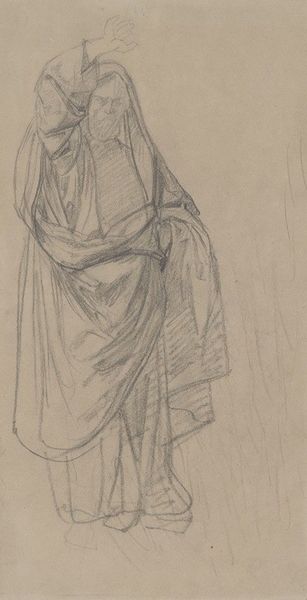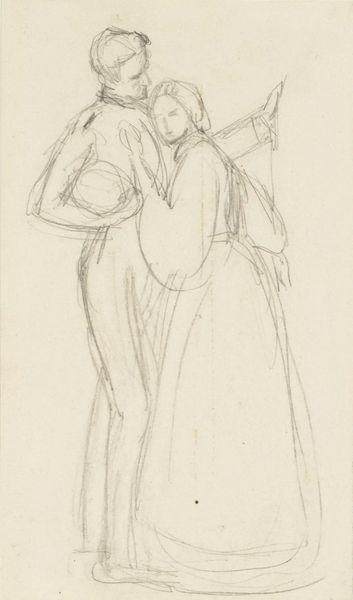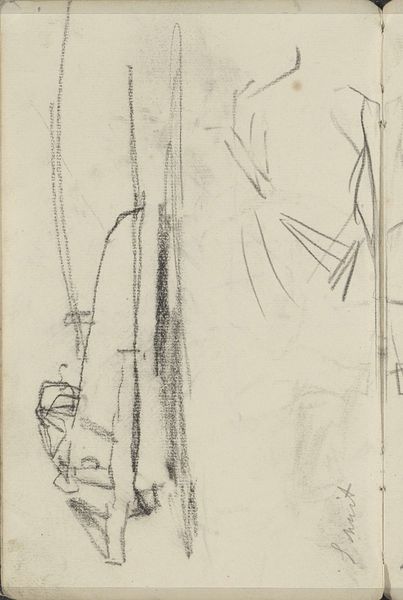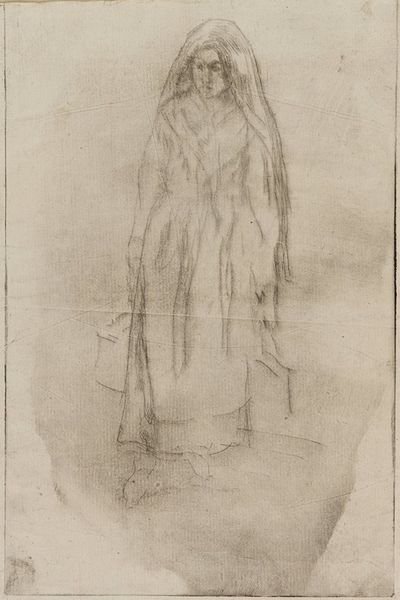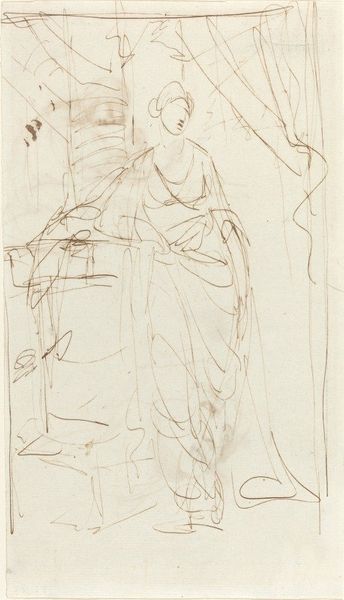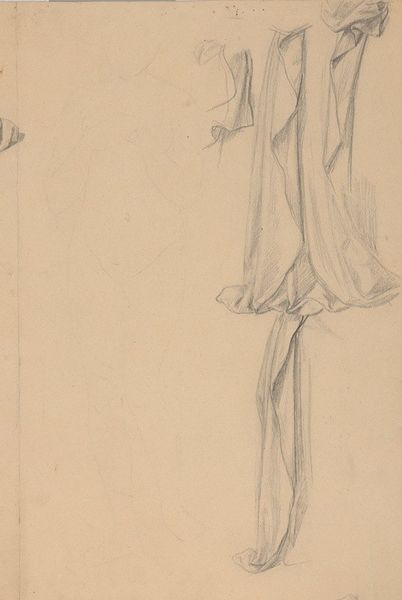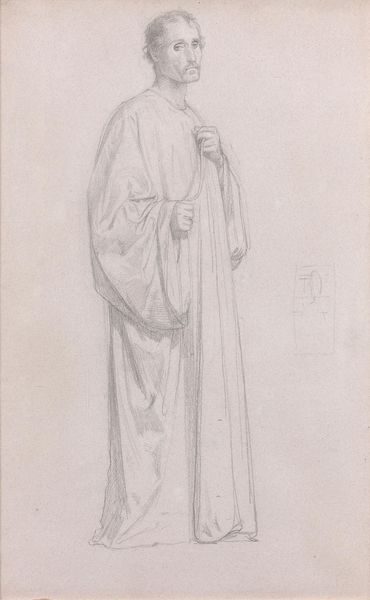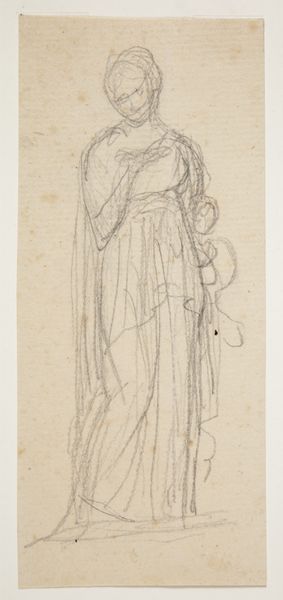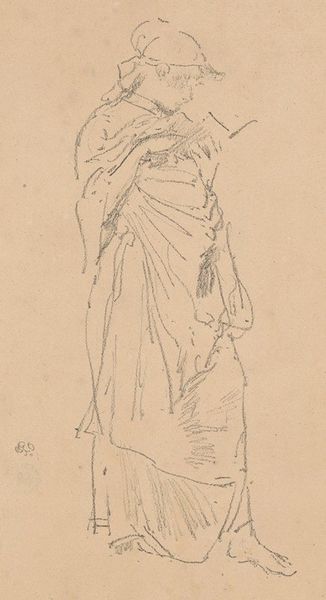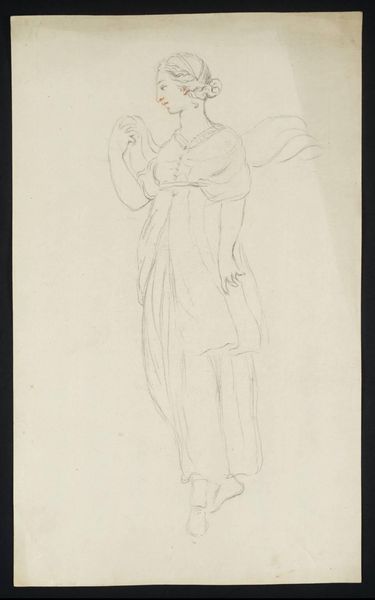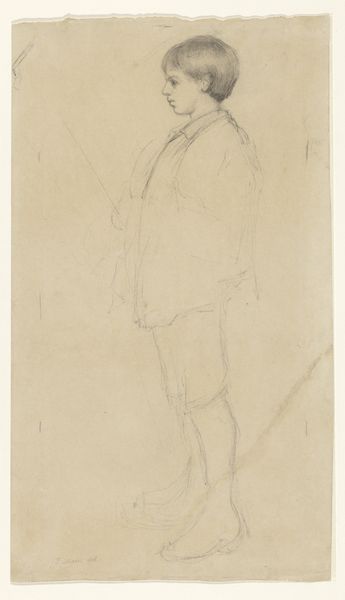
Copyright: Public Domain: Artvee
Editor: So, this is John Everett Millais’ "Tennyson’s St Agnes Eve – Compositional Sketch" from 1855, made with pencil. It's very faint, a preliminary sketch really, but something about the lone figure evokes a feeling of solitude. What strikes you about it? Curator: It feels like a whisper from the past, doesn’t it? This is Millais, deeply entrenched in Pre-Raphaelite ideals, wrestling with Tennyson's poetry. What interests me most is what he *chooses* to reveal in this initial burst of creativity. Notice how the figure seems almost caged by the architectural lines. It’s not just a literal depiction of a woman in a room, but a symbolic rendering of confinement and yearning, wouldn't you agree? Editor: I hadn't considered the confinement aspect, but now that you mention it, it's very prominent. Does that tie into the Pre-Raphaelite obsession with narrative? Curator: Absolutely. The Pre-Raphaelites sought to imbue art with meaning beyond surface beauty. The "St. Agnes Eve" poem is filled with romantic longing and suppressed desire, and Millais captures this beautifully, even in this embryonic state. What details pull you in? The window? The figure's posture? Perhaps even just the hesitant strokes of the pencil itself? Editor: I'm drawn to the figure’s pose by the window, but she almost blends into the architecture. Curator: That's key. It tells us Millais is as interested in atmosphere as he is in the figure herself. Imagine this translated to colour—the stained glass throwing vibrant light, contrasting with the quiet intensity of the woman's vigil. A narrative unfolds before our eyes, even at this initial, skeletal stage. Don’t you find that amazing? Editor: I do. I came in thinking it was just a sketch, but now I see it as a doorway into a larger story and the artist’s thought process. Curator: Precisely! It's a testament to the power of suggestion. Millais invites us to participate in the creation, to fill in the gaps and breathe life into the scene, and to feel and contemplate this scene, doesn't it?
Comments
No comments
Be the first to comment and join the conversation on the ultimate creative platform.
